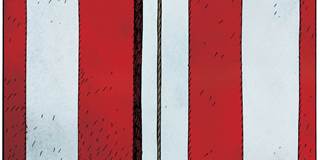Why Has America’s Economic Recovery Stalled?
Fifteen months after the US economy returned to growth, the level of real GDP is still lower than it was when the recession started, in part because households have tripled their rate of saving. That alone, if sustained, implies little prospect of robust GDP growth in the coming years.
CAMBRIDGE – The United States’ import bill now exceeds $2.4 trillion a year, more than twice that of China and greater than that of the 27 European Union countries combined. Since the volume of US imports varies with the overall strength of the American economy, so does the volume of other countries’ exports.



CAMBRIDGE – The United States’ import bill now exceeds $2.4 trillion a year, more than twice that of China and greater than that of the 27 European Union countries combined. Since the volume of US imports varies with the overall strength of the American economy, so does the volume of other countries’ exports.